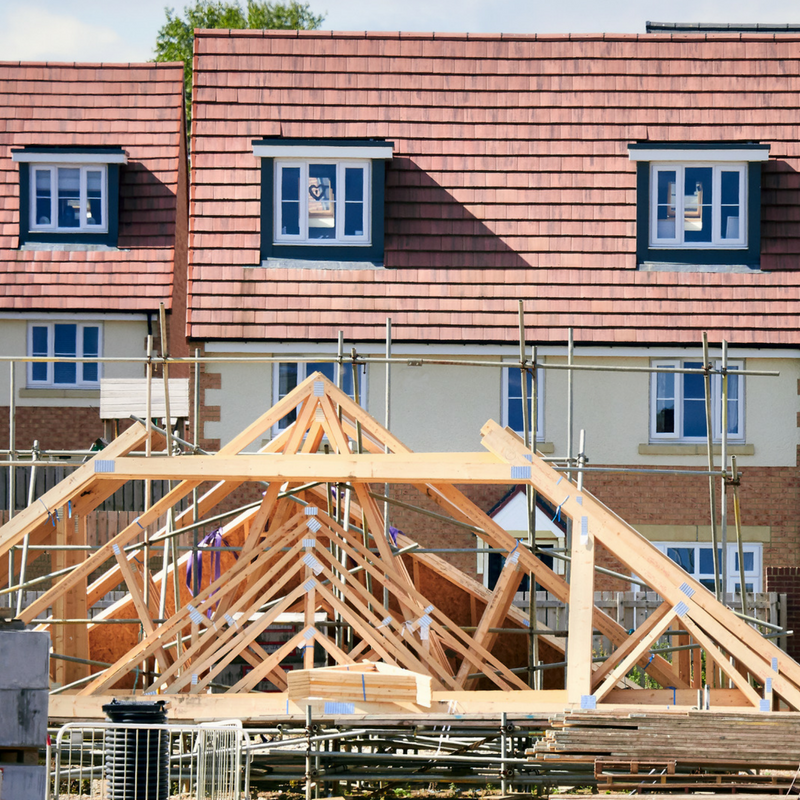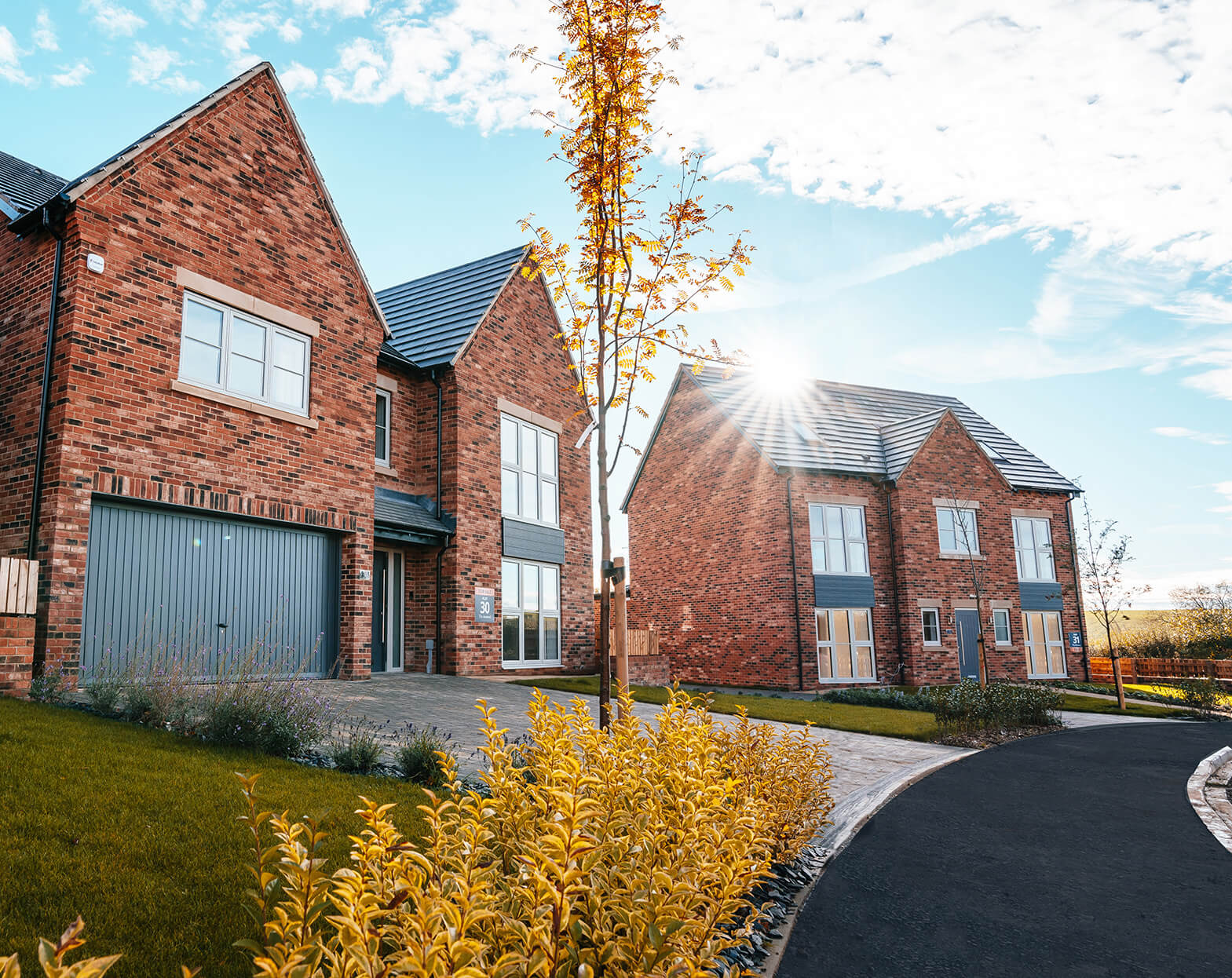Open fast find
Close fast find
Joint Venture Property Investing: Everything You Need to Know
With a growing number of investors seeking new ways to achieve portfolio diversification, alternative property investment opportunities, such as joint venture property investments, are increasingly becoming an accessible option.
Offering investors a less effort-intensive route to achieving desirable returns with property amid an increasingly restrictive landscape for traditional routes, such as buy-to-let, this growth in demand has posed a host of key questions to investors keen to explore the route. Below, we have answered twelve of the most crucial.
1. What is a joint venture property investment?
A property joint venture (JV) is an arrangement between two or more parties where value is created from the development, acquisition and/or management of a property.
This alternative property investment enables experienced investors to work alongside property developers to combine capital with industry expertise. Contributing to the delivery of a range of property projects, directly addressing the excess demand for housing in the UK, and generating significant financial returns can each be achieved through JV property opportunities.
Typically, property JVs are devised to deliver residential and commercial development projects or mixed-use schemes. Some can be large-scale regeneration projects involving multiple partners, whilst others can be smaller projects with fewer investors.
Either way, the objectives remain the same: to deliver schemes that generate a positive impact, often on a targeted regional level, and yield positive financial returns to all parties involved.
In the past, JV property investments were usually only available to institutional and corporate investors, mainly due to their sheer large scale and subsequent large capital requirements.
However, technology has since transformed this investment market.
For experienced private investors, JV property investments can now be accessed relatively easily via specialist investment partners and online investment platforms. This form of alternative investment can be highly attractive if approached and executed correctly with the right team, in part due to its potential to deliver higher returns than many traditional investments.
2. What are the potential returns?
Understanding the potential returns of a property JV opportunity is the first thing for investors to consider.
Typically, opportunities will be presented with a base case return (also known as a target return). This scenario assumes that target development costs and target sales values are achieved. When investing equity into a JV opportunity, base case returns will usually stand at around 1.5x money-on-money, or 50%, although this does vary from project to project.
It's important to understand that, as with all investments, returns are not guaranteed and performance can vary. Therefore, it is common to expect investment opportunities to be presented with three scenarios: a base case, a downside case and an upside case.
The below table illustrates various potential outcomes of an investment, using varying money-on-money multiples across several investment amounts.
|
Initial investment |
Downside (1.3x) |
Base Case (1.5x) |
Upside (1.6x) |
|
£10,000 |
£13,000 |
£15,000 |
£16,000 |
|
£50,000 |
£65,000 |
£75,000 |
£80,000 |
|
£100,000 |
£130,000 |
£150,000 |
£160,000 |
The downside case would typically assume an increase in development costs and a decrease in sales values. Following this, the overall development profit would be adversely impacted and, therefore, the final distribution to investors is likely to be reduced.
Conversely, the upside case assumes that development costs remain within target and sales values are ahead of target. This would mean an increase in the overall development profit and, therefore, an enhanced final distribution to investors.
3. What is the target time frame?
Understanding the length of time that capital is expected to be required for is another important consideration when undertaking any investment. For a JV property development opportunity, a 1.5x money-on-money return may sound attractive, however the time frame of the investment will impact the Internal Rate of Return (IRR).
For example, a JV investment opportunity with a two-year investor hold period and a target 1.5x (50%) return would deliver a gross IRR of 25% (50% / 2 = 25%). Whereas, a JV investment opportunity with a five-year investor hold period and the same target 1.5x (50%) return would ultimately deliver a gross IRR of 10% (50% / 5 = 10%).
Typical JV opportunities usually target an IRR of 25%, as displayed in the former example. This reflects the risk profile of this type of investment, aiming to ensure the potential returns and time frames are attractive for experienced investors. Done correctly and with the right team, joint venture investments can provide attractive returns for investors over a relatively short hold period.
4. What are the investment risks?
As with all investments, there is always a degree of risk that exists.
For JV property investments, risk considerations can fall into a number of categories and should be displayed clearly on any promotional material.
Read More: The risks and benefits of joint venture property investing
Typical risk considerations include the following:
- Loss of capital - as with all investments, a risk to capital exists
- Lack of liquidity - due to no secondary market currently existing for the transferral of shares, investments can be considered illiquid
- Development risk - unexpected delays may occur that could impact the IRR, such as in acquiring statutory consents, complying with building regulations or other construction or contractual matters
- Sales risk - sales prices may be higher or lower than those assumed in the financial projections, which could increase or decrease investor returns
5. How can potential investment risks be mitigated?
There are a number of ways to mitigate the investment risk of property JV opportunities.
In the first instance, it's essential to carry out effective due diligence (DD). Initial DD may include the following key considerations:
- An assessment of the property development team involved and their track record
- An assessment of the project’s proposals
- A review of current market conditions and future trends
A well-produced Information Memorandum or Opportunity Note should provide a clear and fair overview of the investment opportunity for investors.
If you are considering making a significant investment, it would be beneficial to meet the team responsible for the project. Investors could possibly consider a site visit and a review of previous and/or ongoing projects to ensure the legitimacy and effectiveness of operations.
6. How is the deal structured?
Understanding exactly how the property JV deal is arrived at is important. This can help investors to build up their knowledge of precise details of the investment and how agreements and decisions are scheduled to take place.
Deal structure is important and, in most cases, will link back to the funding structure of the joint venture. For example, if senior debt (such as bank loans) and mezzanine finance form part of the funding structure, it's important to understand the order of distribution to loans, interest payments and investor returns.
7. What other capital forms part of the project finance package?
Knowing about the other forms of capital that stand alongside your own within a joint venture property investment can be useful. This can act as a reassuring force, helping investors become more familiar with the other investments they are backing this project alongside, further encouraging transparency and instilling confidence in the project.
Funding structures will vary from project to project, but it is essential to understand what other capital forms part of the funding structure, or capital stack.
Key points to consider include:
- Equity investment - initial capital pledged by investors
- Mezzanine finance - designed to bridge the gap between the developer’s available deposit and the loan available from the senior lender, and usually secured by taking a second charge over the development
- Senior debt - conventional property development loans, whereby the lender takes a first charge over the development
- Target development profit - the profit margin the development is targeting upon the point of completion, and the sales required to break even
8. What experience does the property development team have?
The successful delivery of a property JV requires an experienced team with a demonstrable track record. When considering an investment of this nature, it is strongly recommended that time is taken to understand the capability of the project team and investment team.
Looking into previous or current developments could offer one route of researching the ability of the property team and their extent of industry experience.
9. What is the investment process?
Assuming investors are comfortable with the risk and return profile of a JV property opportunity and an appropriate level of DD has been conducted, it is crucial to understand the investment process.
Key questions to consider include:
- Is this largely an online or offline process?
- What information will I need to provide to make an investment?
- What documentation should I expect to receive evidencing proof of investment?
- How will the company keep me updated on the progress of my investment?
Addressing these questions can help investors become more informed on the technicalities of the process, enabling sufficient planning and fostering transparency.
10. How can I review documents?
Having access to informative documents and easily being able to review the project's position at any given point in time is understandably a key concern for investors. Ensuring that access to relevant information is granted would be a wise step for JV property investors to take.
A reputable investment provider will ensure any important documents, changes or updates to investments are communicated in a timely and transparent manner to investors.
11. Is the process completed online or offline?
Asking the question of whether the investment will largely be completed virtually or in-person is important. This can help investors understand whether the project is accessible and feasible.
Most often, especially in post-Covid-19 society, investment processes can be completed online, following the ever-increasing digitalisation of communication and services. Thus, most JV property investments are carried out via online investment portals whereby investors are able to join, invest and monitor the performance of their investments through a designated client portal.
12. What level of reporting or updates will be received during the life cycle of the project?
Remaining up to date with the progress of the investment is important. This allows investors to remain connected to information regarding deadlines being met, any challenges faced, solutions accompanying these challenges, and any general deviations from, or adherence to, project plans, for example.
With most joint venture property investments, it can be expected that investors receive updates about the project every quarter.
The Bottom Line
Ultimately, with JV property investing continuing to grow in popularity (as demand for traditional routes such as buy-to-let dwindles following tightening legislation, rising maintenance costs and an overall restricted ability to produce considerable and timely returns), reviewing the questions outlined above has never been more crucial for investors considering joint venture property investments.
As powerful vehicle for generating potentially superior returns, diversifying into property and contributing to long term positive social impact in a period in which the demands of the UK’s housing crisis are consistently rising, the increasing attractiveness of joint venture property investing to experienced investors is unsurprising.
Having said this, though the rewards of investing via this route can be appealing, as with all investments, a risk of failure exists. Subsequently, conducting adequate due diligence and ensuring all of the above questions and concerns are answered prior to parting with capital can place investors in a positive position when looking to supplement their portfolio with a joint venture property investment.
%20(3)%20(2).jpg)









